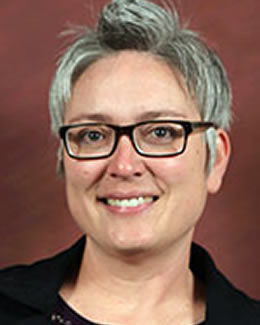Research Catalyst Grantee

Jacqualine Grant
Southern Utah University
Project Title
Enhancing biodiversity, water conservation, and urban agriculture through green roof infrastructure
Abstract
Climate change and a growing urban population are affecting the water cycle and future of water resources in the semi-arid state of Utah. Over the past 50 years, the hydroclimate has shifted toward more intense rainfall events and lower amounts of snowfall. Increased intensity of precipitation events lead to stormwater pulses that can cause combined sewer overflows and infrastructure damage. Stormwater that cannot percolate through the soil adds to stormwater runoff and fails to regenerate precious ground water supplies. These precipitation changes are occurring in tandem with a predicted doubling of Utah’s population by 2050. This increasingly urban population will require solutions to improve water management and increase urban food production. One solution to the problems posed by climate change and urbanization is the development of green infrastructure. Implementing green infrastructure is a first step toward integrating the dynamics of coupled natural and human systems. One type, the green roof, has been used to control pulses in stormwater runoff by absorbing then slowly releasing water from storm events. An estimated 80 million square feet of green roof has been constructed in the United States since 2004, which indicates that this particular green infrastructure has gained acceptance as a tool to reduce stormwater runoff and cool buildings. However, the focus of green roof research has begun to shift away from stormwater control to a variety of other uses. This project proposes to investigate an expanded use of green roofs: rooftop agriculture. This interdisciplinary and collaborative research project is two-pronged: (i) it will evaluate the feasibility of growing agricultural crops on rooftops in arid environments; (ii) it will determine the impact that green roofs in Utah are having on invertebrate biodiversity, with a specific focus on pollinators needed for rooftop agricultural projects. The research will generate new insights into the dynamics of coupled natural and human systems by examining the impacts of green infrastructure on agricultural production and invertebrate biodiversity. The research will also derive quantitative estimates of crop coefficients for crops suitable to rooftop agriculture in semi-arid regions.
This research will engage visitors to the Garth and Jerri Frehner Museum of Natural History at Southern Utah University through a short survey to assess community understanding and acceptance of green infrastructure. The project combines an education and outreach plan that will increase awareness of green infrastructure in rural communities at the elementary and middle school levels and inform policy managers about how to integrate green infrastructure into stormwater systems. The project will also strengthen institutional partnerships between a primarily undergraduate institution (Southern Utah University), a research 1 institution (University of Utah), and the Garth and Jerri Frehner Museum of Natural History. The integration of students into every step of the project will educate the next generation of interdisciplinary scientists at both the undergraduate and graduate levels.
Collaborators
Matthew Weeg, Southern Utah University
Steve Burian, The University of Utah
Youcan Feng, The University of Utah


